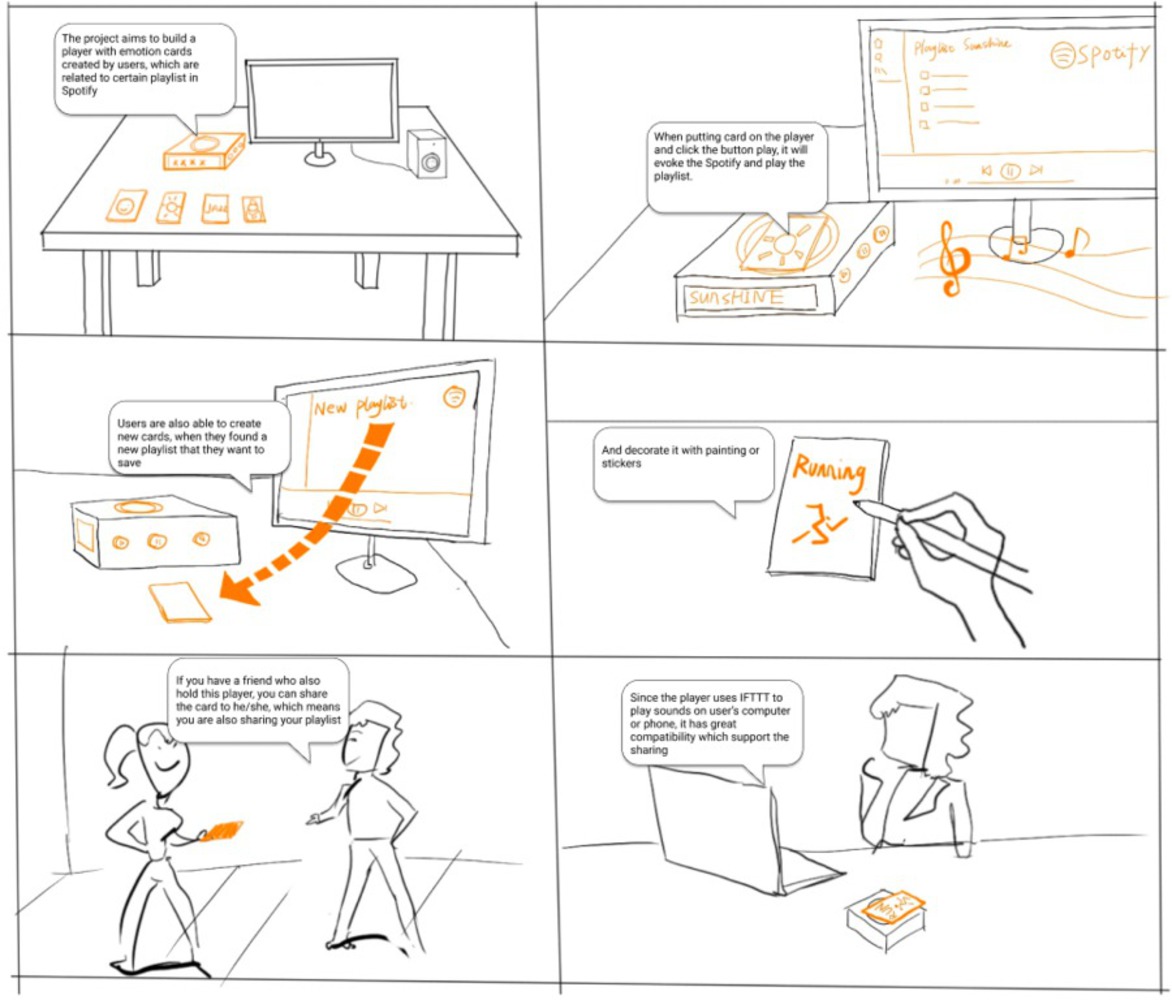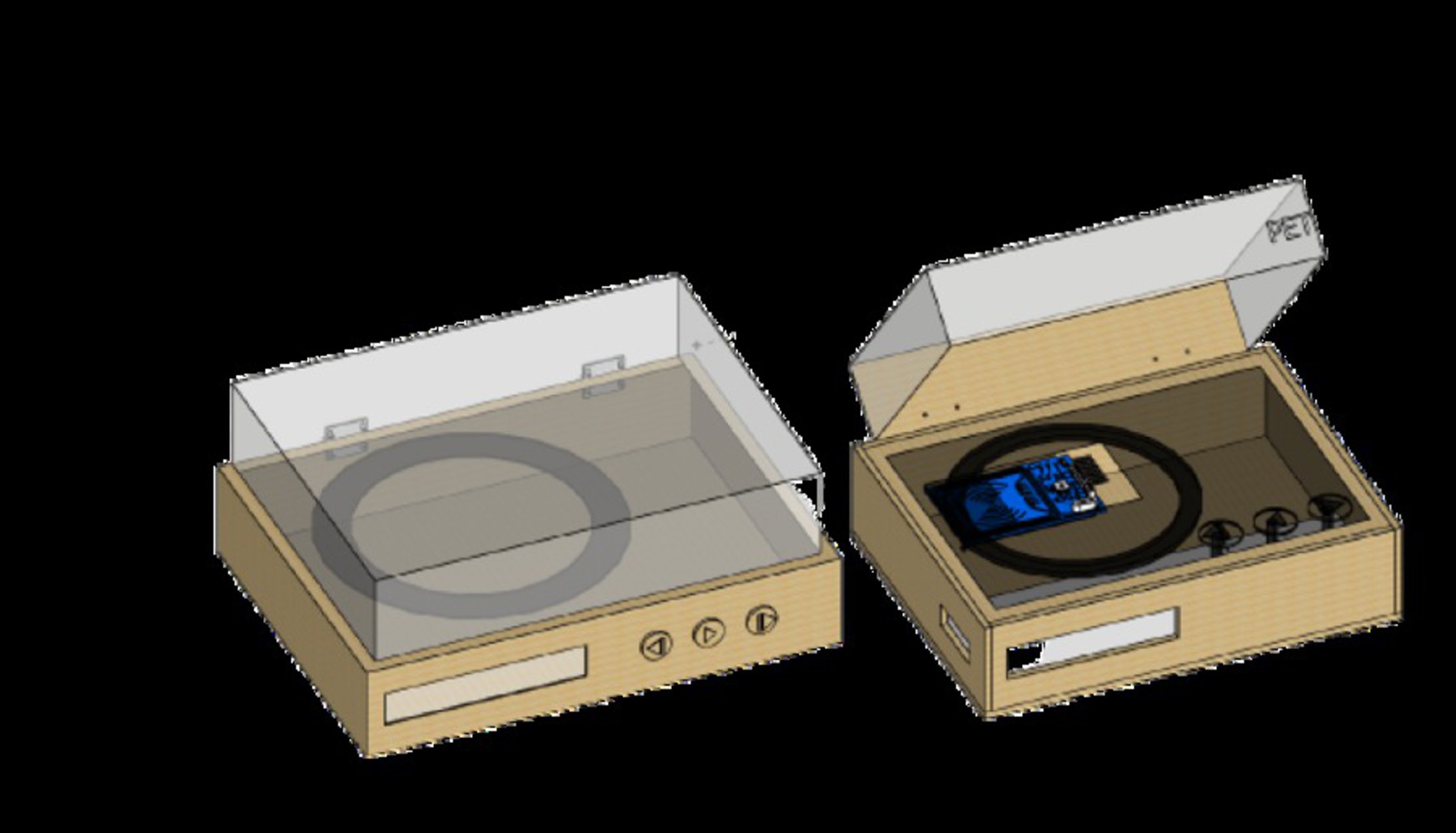Precedents
1. Juuke: https://www.instructables.com/Juuke-a-RFID-Music-Player-for-Elderly-and-Kids/
This product uses RFID technology to identify different song cards and play the corresponding song. It is a physical music player focused on ease of use.
It uses an Arduino Uno and music is played from the DFPlayer, a mini MP3 player designed for Arduinos. This product does not utilize internet connectivity, however, and uses a microSD card with pre-stored tracks.
I think that this product is a good example of moving music streaming into a more analog and tangible interface and serves as good inspiration for our product. In our project, we want to add the feature of connecting to existing music streaming services, from which we would gain access to millions without having the burden of storage.
2. Prizm: https://www.kickstarter.com/projects/prizm/prizm-turn-your-speakers-into-a-learning-music-pla
This product is a learning music player/speaker that senses the environment of the user (number of people, who is present, day, time, etc.) - i.e., it detects a specific context - and plays the right type of music you prefer in that specific context. You can add to the data my pressing the heart button (which also adds the song to your playlists). It connects to different music streaming services such as Spotify (and also free Souncloud accounts!) While the scope of this product is beyond the feasibility of a project we can pursue within a couple weeks, it is a very cool precedent that we can get inspiration from.
While our currently proposed project only takes in manual inputs, we could also use the programming aspect of IOT to create some sort of user-defined automated database about ‘context’. For instance, depending on the time of day, maybe the user wants to listen to different types/genres of ‘sad’ or ‘happy’ music.
This product also has an interesting connection feature: if someone else is with the user, the speaker can merge your music taste with theirs and choose songs that both people will enjoy.
For our project, we want to incorporate a connectivity component by letting users select songs for other users. It would be fun to think about how we can ‘merge’ various users’ music tastes through simpler means.



